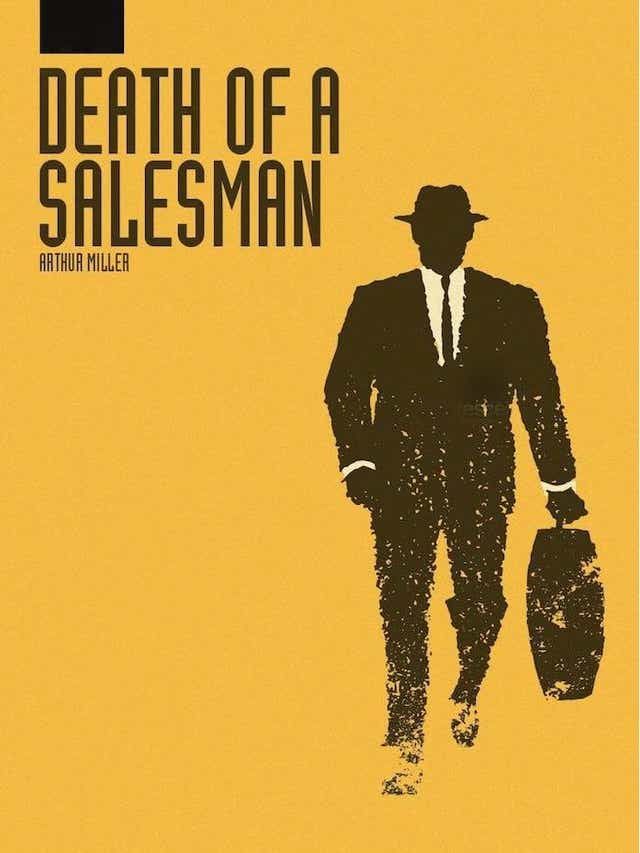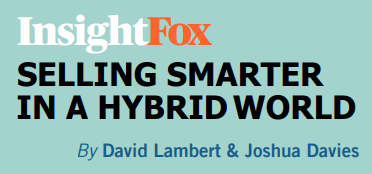
In Arthur Miller’s famous play,
Death of a Salesman, the central character Willy Loman idolizes Dave Singleman, a great salesman known all over New England.
“
When he died, hundreds of salesmen and buyers were at his funeral.”
More than fifty years later, the business world needs more Dave Singlemans.
Increased buyer choice resulting from globalization and the growth of the Internet leaves companies with fewer and fewer opportunities to differentiate their products and services.
In today’s crowded marketplaces, where prospective buyers have greater and more immediate information and choice, it is often the way in which a product or service is both sold and delivered that differentiates.
Surprising then that despite obvious and far reaching changes to the way that people buy, many consultants and salespeople still “handle objections” and use “closing techniques” popular at the time of Miller’s 1949 play.It is a fact that much of the selling that is done today focuses on persuading people to buy things that they might not really need.
The problem for organizations is that while aggressive sales approaches may ensure attainment of short-term targets, they are damaging in the medium to long-term.
Forward-thinking organizations have worked to break the cycle and progress has been made, notably with the success of “consultative selling”, an approach that focuses attention on building an understanding of the problems facing buyers so that a match can be made to the seller’s offering.
However, for many sellers, “consultative selling” remains a means to an end – a way of finding a problem to fit their offering.
Indeed, we’ve heard such tactics described as “pushing the bruise” or “backing up the ambulance” – neither of which sounds like the basis for a sustainable business relationship.
Smarter Selling advocates a different approach. Rather than the seller starting with the premise that the buyer owes him or her an order (so that they can make their sales number), it takes the position that the seller owes the buyer owes the buyer for their precious gift of time that once committed is gone forever owes them for the information they disclose, some of which may be sensitive, confidential and even personal owes them for an order that may be placed – today or on another day.
To satisfy this debt, the seller seeks to create an enjoyable and interesting conversation for the buyer by focusing on three key aspects:
- inviting input from the buyer on the format, content and length of the discussion
- respecting and making efficient use of the time donated by the buyer
- inviting input from the buyer on the format, content and length of the discussion
Done right – aligned with a genuine desire to help the buyer achieve their objectives – business relationships become enjoyable, sustainable and highly profitable. The relationship that develops is analogous to that between a doctor and a patient – a relationship based on deep trust.
Of course many salespeople will tell you they have “great” relationships with their buyers. Digging deeper we typically find that business relationships fall into one of 4 types.
This is a friendly relationship, but superficial.
Both parties have fun and probably share some common interests.
However the conversation rarely moves to business issues and indeed there may be some doubt over the suitability of your offering.
These are project driven relationships where the seller is typically called in to help the buyer sort out a current mess.
These relationships often drive large revenue but the revenue is uncertain as requests for help are unexpected which can also put stresses on resources.
Time-consuming proposals (for both parties) are a feature of each request for help.
The buyer recognizes that the seller’s offering is as good as or better than competitor offerings but there is no personal rapport between buyer and seller.
The danger here is that if at some point a competitor develops a similar or better offering, price will become the main differentiator.
This relationship is where the buyer trusts the salesperson. They know the sales person is there to help them not sell to them.
The buyer gets value out of every interaction with the seller.
This value means that when the buyer comes to have to pay for the offering they rarely argue about price. They never consider giving this work to anyone else.
The sales process tends to take longer, but the value and profitability is typically higher and referrals for other work are common.
One way to determine the current level of the relationship is to ask the buyer what they think.
Failing that reflect on why meetings are called, who says what in meetings and how do meetings end. The answers to these questions point to the type of relationship.
Effective relationship people set targets for a defined period and then decide where they would like to get to by the end of the each interaction. They measure success by the conversations they have with their buyer – rather than the number of dollars they have made.
Ford Harding, in his book Rain Making captured the essence of modern sales when he wrote: “People buy [based] on feelings and use facts to justify the way they feel.” Think about the last piece of work you failed to win.
What was the reason you were given? More than 90% of the time, the reason given is price. That isn’t the real reason – it’s just the easiest and least controversial. The real reason is more likely to be that they didn’t like your people and didn’t want to work with your organization, but it’s hard to say that.
Successful salespeople today have excellent inter-personal skills and a strong focus on the buyer allied to a desire to help rather than sell.
They recognize that the key to success lies in their interaction with the buyer.
Here are some of the areas they focus on:
- The start of any interaction a clear statement of purpose – the objective of the discussion agreeing how to use the time available and offering the buyer the opportunity to take control of any agenda making a clear statement of any benefit that they are seeking to deliver to the buyer. All with the purpose of signaling a desire to help as opposed to sell.
- During any discussion asking questions to help the buyer elaborate their desired future providing options and advice to help the buyer achieve their desired future regardless of whether it leads to a sale of their offering telling stories to prove capability (as opposed to jargon-filled motherhood statements) co-developing solutions with the buyer (as opposed to telling them the answer). All with the purpose of developing trust and being perceived as “different”.
- After the meeting - Maintaining contact by providing written summaries of important conversations periodically asking for feedback – there are always things that could be done better staying in touch with relevant information – if only to demonstrate that the buyer is in your mind. All with the purpose of continuing the dialogue.
- Paying attention to the inter-personal aspects of the sales process, while remaining up-to-speed on product or service offerings and the buyer’s business and market, provides an opportunity to truly differentiate and develop lasting partner relationships. As one client commented to us recently “These inter-personal skills are the missing piece of the jigsaw”.
The book Smarter Selling takes a comprehensive look at the inter-personal aspects that are critical to building sustainable, trust-based relationships.
The book is packed full of ideas, real examples, tools and templates. Everything needed to start selling smarter.
Dave Singleman would approve.
I hope you found this useful.

For more on understanding and developing your business relationships and trust, access the practical application canvas .
The
Evaluate relationships and build trust canvas includes guidance, a worksheet for you to complete for each of your buyers, as well as short videos by David Lambert (best selling co-author of
Smarter Selling) and CEO of Relcap.academy), a diagnostic to assess your relationships, ebooks, and other useful resources.




